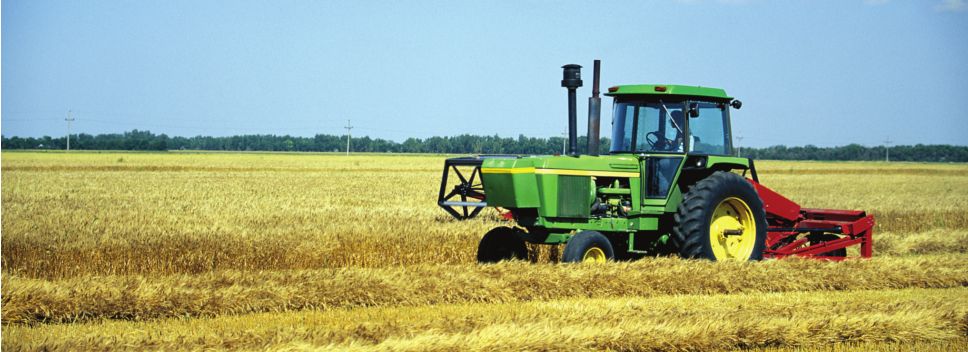
Making Mr. McGregors
Is the California drought an opportunity for Illinois farmers?
DYSPEPSIANA | James Krohe Jr.
Moving west to California some years ago, I was commanded to pull off the interstate at the state line in the Sierra Nevada. A young man in uniform asked me to open the car so he could inspect what I was carrying.
A narc? DHS goon? Nope. He wore the uniform of the California Department of Food and Agriculture, and he wanted to look at the potted herbs I had in the back seat. He was on the lookout for invasive plants and insects that could wreak havoc with the state’s agricultural industry. My plants passed the test, and he gave me a lovely certificate, which I have framed on my wall like a diploma.
You can understand why they go to the trouble. California, that country masquerading as a state, grows half of all the fruits and vegetables in this country. It accounts for even bigger proportions of many specific foods – 81 percent of U.S.-grown carrots, 95 percent of broccoli, 86 percent of cauliflower, 74 percent of raspberries, 91 percent of strawberries. So pests or diseases or soil salinization or cuts in the supply of field workers in California affect the whole country, even us’ns back here in Illinois.
California’s Central Valley has the largest patch of Class I soils on the planet, on which the sun shines 300 days a year. Irrigation tides over field crops during the dry summers, and since it never freezes in the winter, winter rains make possible a second, cool-season crop. All the valley doesn’t have these days, and possibly in the longer run, is water. Tom Philpott, who writes about food and farming for Mother Jones magazine, recently argued in the New York Times that it is time to “de-Californify” the nation’s supply of fruits and vegetables by shifting production to other regions to protect against calamities of the sort California faces today.
Might Illinois capitalize on the water problems of other states to capture ag markets for Illinois? Might money now sent to California growers be spent here at home? It seems to make sense. Farms need water and good land, and Illinois has plenty of both. An awful lot of the stuff eaten in Midwest cities was trucked all the way from California across Illinois fields that could be growing the stuff. Chicago once supplied its tables from fields only a few hours from the city. (Remember the old overnight peach trains from southern Illinois?) Philpott cited the 2010 Iowa State University study whose authors estimated that as few as 270,000 acres of land could supply everyone in Illinois, Indiana, Iowa, Michigan, Minnesota and Wisconsin with half of their annual tomatoes, strawberries, apples and onions, and a quarter of their kale, cucumbers and lettuce.
Why not? Eating vegetables is good for you, but so is growing them; a mechanized vegetable farm can bring in many times more money per acre than does corn. And we know that apples, peaches, sweet corn, pumpkins, melons, popcorn, horseradish, asparagus, green beans, peas and potatoes can be grown in Illinois because they already are. Illinois ranks No. 3 in the country, for example, in the production of potatoes, America’s favorite vegetable.
Illinois’ output falls a little short of a cornucopia, however. California’s Central Valley alone grows 230 different crops. While more than 21 million Illinois acres are devoted to raising the corn and soybeans that in various forms fatten the nation’s chickens, hogs, beef cattle and people, snap bean plantings (to pick a typical such crop) occupy 11,000 acres; I bet Springfield has more land than that devoted to parking lots. As a result, a measly 6 percent of the $19 billion a year that Illinois agricultural commodities bring in each year comes from sales of things other than corn, soybeans and animal products.
That is not because Illinois can’t grow table foods but because it won’t. Seven-dollar broccoli might tempt more to try, as Philpott predicts, but Illinois farmers have invested untold wealth acquiring the machines and know-how it takes to raise feed grains. Even if the profits from table food were tempting, turning a corn farmer into a Mr. McGregor is nearly as hard as turning a vulture capitalist into a governor. For the foreseeable future, Illinois fruit and vegetables will grace the farmers markets but not the supermarkets.
Contact James Krohe Jr. at [email protected].
Editor’s note
Just
when we start to think we understand the game now being played at the
Statehouse, we learn something that makes us not so sure. At fi rst the
Democrats’ position seemed to make perfect sense – that it’s wrong to
hold the state budget hostage to win approval for the governor’s
“Turnaround Agenda,” which we’d come to believe is just a right-wing
antiunion tirade. But now that the Rauner administration has released
the actual proposals, we fi nd that they’re not all bad. Why not limit
workers compensation to job-related injuries? Why not try to limit the
kind of lawsuit venue-shopping that makes Madison County a judicial
hellhole? Why not give local voters more authority to limit property
taxes? These reform proposals are going to require a full debate, which
could happen over the summer or over the next year, and a budget will
have to come fi rst. But at least they’re not as scary as we had feared.
–Fletcher Farrar, editor and publisher